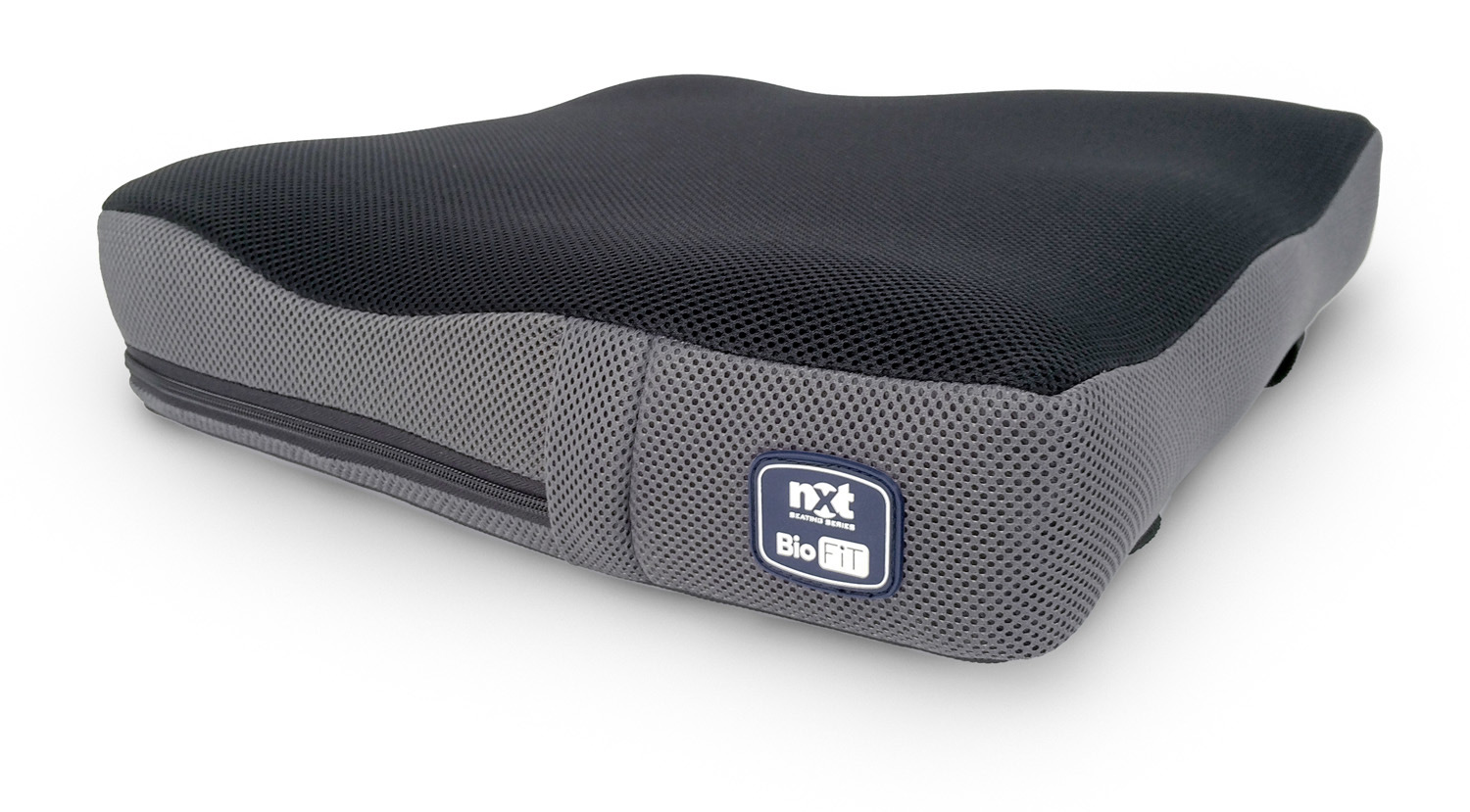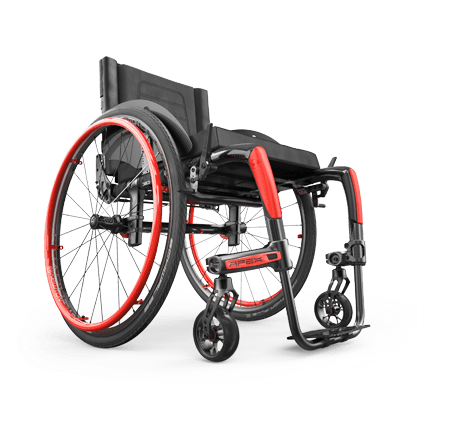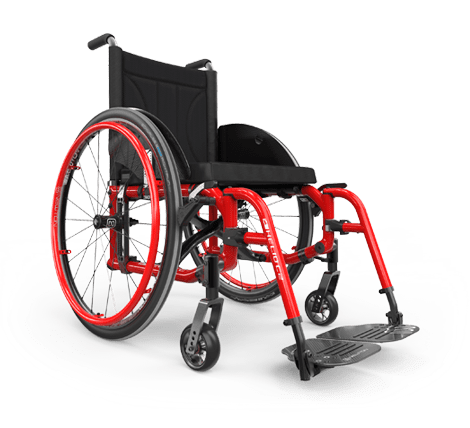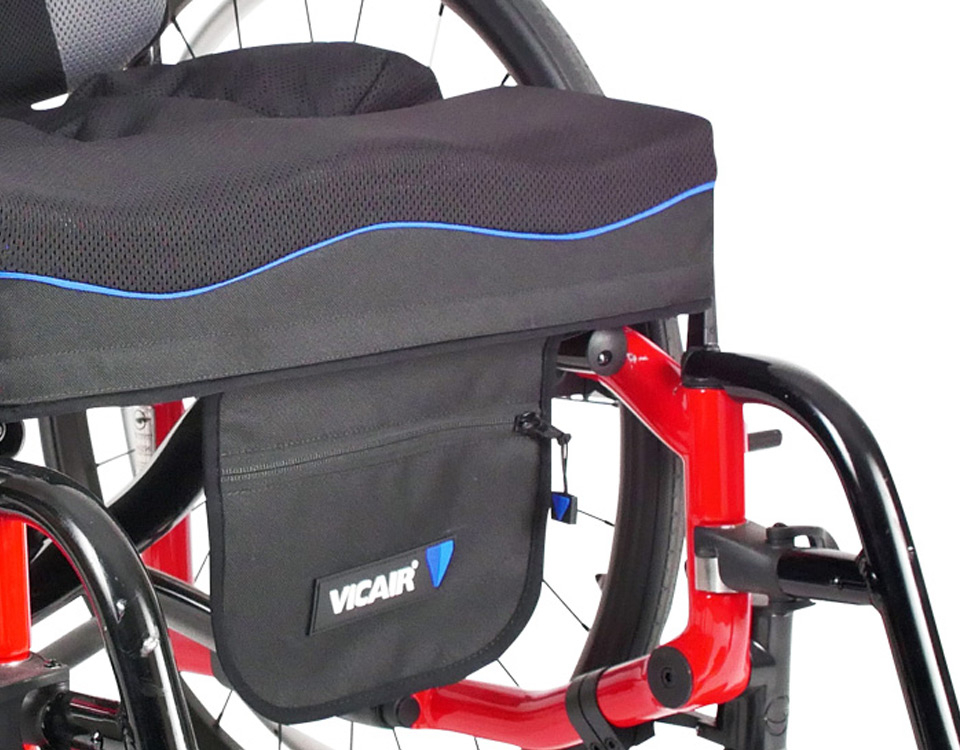Wheelchair seat cushions are rarely in the spotlight and are seldom centre stage. Yet, research and developments in the world of seating and positioning are plentiful and dynamic. Thus, nowadays there is an array of seating products that not only provide comfort to individuals, but also considering their condition, provide positioning, stability and preserving the integrity of the skin and soft tissue preventing pressure injuries.
What should you consider when testing a new cushion? What are their individual material properties and what is the function of the cushion? Here are some of the topics we have focused on.
More Than Just a Wheelchair Cushion
One might think that the perfect cushion would be one that is most comfortable for its user. However, it would be a mistake to simply stop there. In fact, the chair cushion must also meet the needs of the user’s medical condition and lifestyle.
Although the cushion’s main purpose is to be used in a wheelchair, it may be useful to ensure that the same cushion can be used in other environments. For example, the cushion could be used in the car, at the movies as well as in the shower. After all, “Even though the environments change, the users’ condition and medical needs remain the same”, said Darren Hammond, physical therapist and a certified wound specialist.
Furthermore, some wheelchair cushions are true technological feats. While cushions address very specific medical needs, some can be quite complex in terms of use and maintenance and manufacturing process. However, to ensure that proper care and use do not turn into an additional concern, the use of a cushion should remain simple and its care should equally be trouble-free.
More Than Just Comfort
Although the cushion should first and foremost be comfortable, it is important to keep in mind that it is a medical device. This is why wheelchair cushions are prescribed by physicians.
Medically, the first purpose of the cushion is to protect the integrity of the skin and soft tissue to prevent injuries. A cushion can be suitable for one person and be the worst device for another. Since pressure injuries must be prevented at all cost, the choice of a cushion should be made by a medical team including an Occupational and/or Physical therapist.
Stability is the second characteristic a clinician will look at. In fact, the materials used offer different types of support. The clinician will try different cushions to find the one that will keep the patient in a stable, as well as comfortable position all while maintaining the integrity of the skin and soft tissue.
Finally, the cushion can also be an invaluable aid in positioning users with unusual natural postures due to particular medical conditions. Some cushions are modular and will allow the use of different types of materials in various areas of the seat. Others can be molded to fit the shape of the user’s natural sitting position. When prescribed correctly, the cushion can become a valuable positioning tool that can even improve the user’s general condition and allow for greater functional ability

Different Types of Product Categories and Families
There are 3 main categories of wheelchair cushions, which may differ by jurisdiction or country and are closely related to the funding of their respective health care systems.
The first category echoes the clinical benefits listed above; cushions whose primary purpose is to protect the skin and soft tissue. When prescribed by a health professional, these cushions are most likely to be reimbursed in many jurisdictions by public or private health programs.
The second category includes cushions that have the clinical benefit of improving or maintaining the user’s positioning. As is the case with the first category, these cushions are quite often reimbursed in many jurisdictions by public or private health programs.
The third category is more complex since it includes cushions that have the dual purpose of protecting the skin while ensuring the user’s stability. Reimbursement by public or private health programs become a little more intricate for this category of cushions as more conditions apply.
Among these categories, there is a family of products that are mainly characterized by the medium or the materials used to manufacture them. Therefore, cushions made of foams, gel, air, fluids or polymers are all available in the 3 categories mentioned above.
You are probably wondering how to find your way around all this information. “Choosing a cushion is all about balance. You often have to sacrifice a little comfort to preserve the integrity of the skin and vice versa. It’s always about balance and compromise” said Hammond. When asked about the red flags to watch out for, Hammond is adamant that “redness and skin discoloration (blue, purple) are what you want to avoid at all cost. Taking the time to try out a cushion is not always possible, but highly recommended”.
Sitting Comfortably and Safely
As shown above, the cushion can have other daily uses than sitting in a wheelchair. This is why it is very important to choose a cushion that will offer you the highest level of comfort while being as versatile as possible. We have also seen that preventing pressure sores and the stability and positioning of the user are also significant clinical objectives. Finally, we have reviewed the main product categories and families.
The cushion is the primary contact between the body and the chair. Comfort will provide the users with a better quality of life and improve their overall fonctions. Keep learning and trying out cushions. Bottom line, your tush is worth it!








